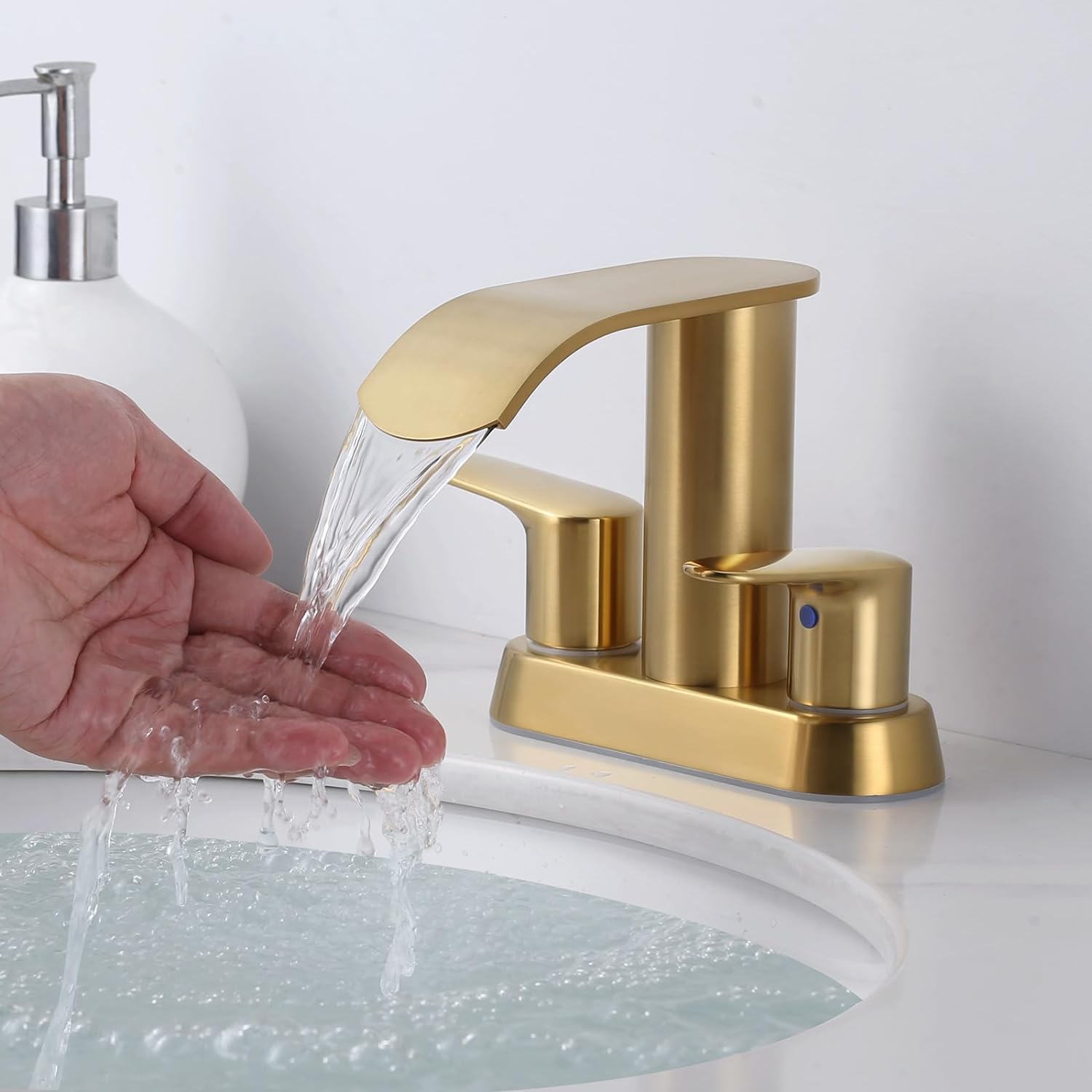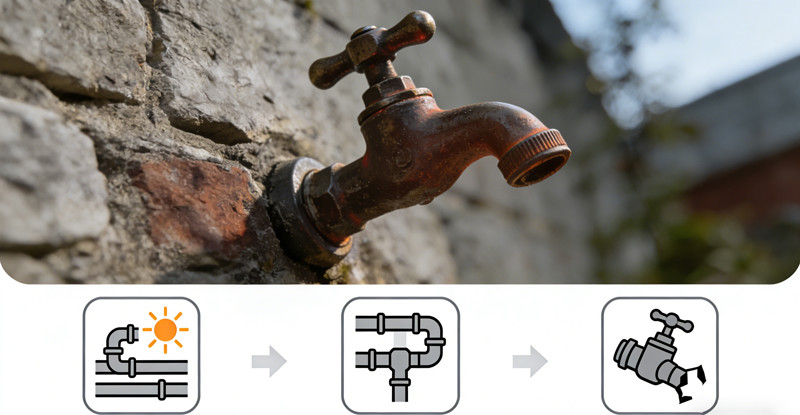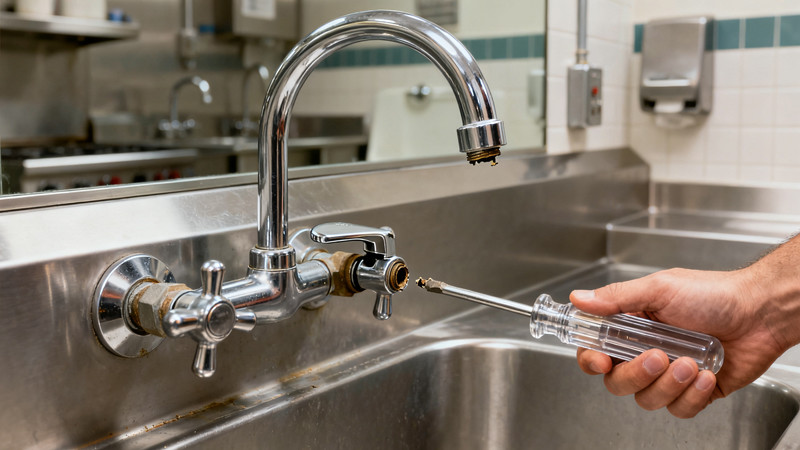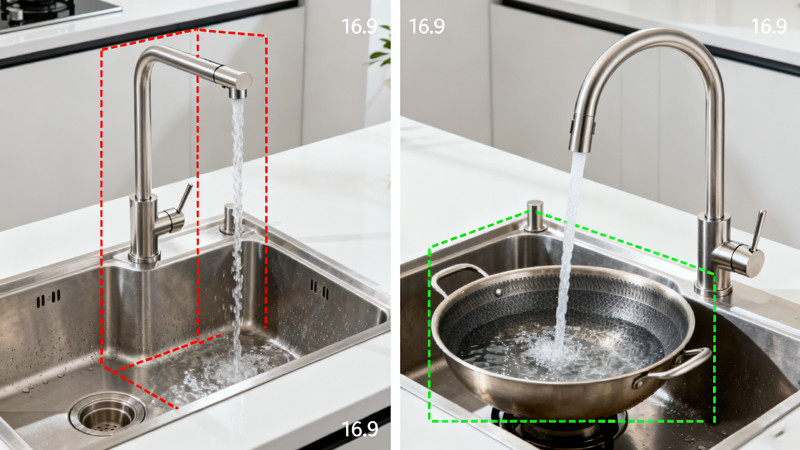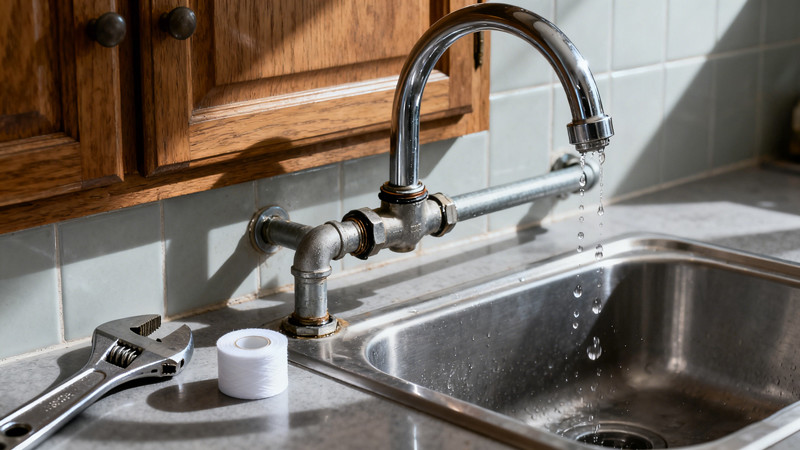
When installing a faucet, ensuring a watertight seal is essential. Even the highest-quality faucets can leak if they aren’t installed properly, and a critical part of that installation process involves choosing the right sealing material. Two common products used in faucet installations are plumber’s tape (also known as Teflon tape or thread seal tape) and plumber’s putty. Both serve important purposes, but they are not interchangeable.
In this post, we’ll explore the key differences between plumber’s tape and putty, where each is used, and which one is better suited for your next faucet installation.
What Is Plumber’s Tape?
Plumber’s tape, often referred to by the brand name Teflon tape, is a thin, white tape made of PTFE (polytetrafluoroethylene). It is used to seal threaded pipe joints, particularly where metal threads screw into one another. Its purpose is to lubricate the threads, making it easier to screw them together and preventing leaks by filling the microscopic gaps between threads.
When to Use Plumber’s Tape:
- On threaded pipe connections (such as supply line connections)
- To help prevent leaks in pressurized water systems
- When connecting male threaded fittings to a faucet or valve
How to Use Plumber’s Tape:
- Clean the threads on the male fitting.
- Wrap the tape clockwise (in the direction of the thread) around the threads 2-4 times.
- Press the tape firmly into the threads.
- Screw the fitting into place by hand and tighten with a wrench if needed.
Note: Plumber’s tape should not be used on compression fittings or connections that do not have threading.
What Is Plumber’s Putty?
Plumber’s putty is a malleable sealing compound used to create watertight seals around non-pressurized connections. It remains pliable after application, making it useful in areas where a soft, moldable seal is needed. Unlike tape, which is for threads, putty is typically used under faucet bases, sink drains, and other flat surfaces where metal meets a sink or countertop.
When to Use Plumber’s Putty:
- Under faucet bases to prevent water from leaking into the counter
- Around sink drain flanges
- Around the base of pop-up drain assemblies
How to Use Plumber’s Putty:
- Roll the putty between your hands to form a rope.
- Place it around the edge of the faucet or drain flange.
- Install the fixture and tighten the mounting hardware.
- Wipe away excess putty that squeezes out.
Note: Plumber’s putty should not be used on plastic parts or porous surfaces like granite or marble (unless labeled as safe).
Key Differences at a Glance
| Feature | Plumber’s Tape | Plumber’s Putty |
|---|---|---|
| Type | PTFE Thread Tape | Malleable Clay-like Compound |
| Primary Use | Threaded connections | Fixture bases and drain assemblies |
| Pressure Rating | Used in pressurized joints | Not for pressurized areas |
| Hardens? | No | No (remains pliable) |
| Reusable? | No | Can be reused before hardening |
| Best For | Pipe threads, male fittings | Faucet bases, sink drains |
So, Which One Should You Use for Faucet Installation?
In most faucet installations, both materials may come into play depending on the parts involved:
- Use plumber’s tape for any threaded connections, such as attaching water supply lines to the faucet.
- Use plumber’s putty under the base of the faucet if it doesn’t include a rubber gasket, to seal the faucet to the sink or countertop.
When to Avoid Using Each:
- Do not use plumber’s putty on threaded fittings.
- Do not use plumber’s tape on compression fittings or places requiring rigid seals.
Alternatives to Consider
Sometimes, modern faucets come with pre-installed rubber gaskets or silicone seals, which may eliminate the need for plumber’s putty. Likewise, pipe dope (a liquid thread sealant) can be used instead of plumber’s tape in some threaded connections. However, for most DIYers, plumber’s tape and putty are the go-to choices for ease and accessibility.
Final Thoughts
Choosing between plumber’s tape and plumber’s putty isn’t an either/or situation – each has a role in faucet installation. Plumber’s tape is essential for sealing threaded pipe joints to prevent leaks under pressure. On the other hand, plumber’s putty is perfect for creating watertight seals between the faucet base and sink, preventing water from seeping under the hardware.
When in doubt, read the manufacturer’s instructions that come with your faucet. Many modern fixtures include built-in seals that may not require additional materials.
Still, understanding the difference between these two plumbing staples helps you avoid leaks, protect your fixtures, and ensure a long-lasting, professional-quality installation. Happy plumbing!
 WOWOW Faucets
WOWOW Faucets